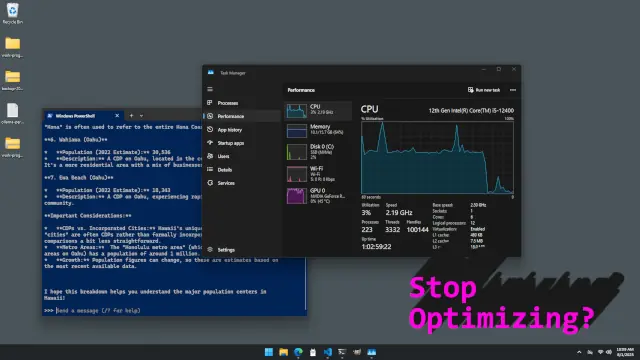When to Stop Optimizing a Program
Suppose you make a cool and useful program that does something you are interested in. And with time, you add more data and the program runs slower and slower. Some optimization work is necessary, but this can be taken too far—when do you stop optimizing the program? When is fast, fast enough?

The simple answer is: I don't know. You should probably just read someone else's blog if you want to know the answer. There are a lot of considerations here—if you enjoy optimizing computer code, you probably should spend more time doing this activity. And if the program is more of a hobby instead of work, it may also warrant more attention.
Even for enthusiasts, though, there needs to be a limit. Optimization can lead to negative outcomes such as:
Sometimes it can be a better idea to change the design of the program so that it does not need as much optimization—usually by making it simpler. However, a certain amount of optimization is helpful to nearly any program. Computers are supposed to automate our work, and as everyone knows, there is nearly an infinite amount of work to do—so it best be done quickly.